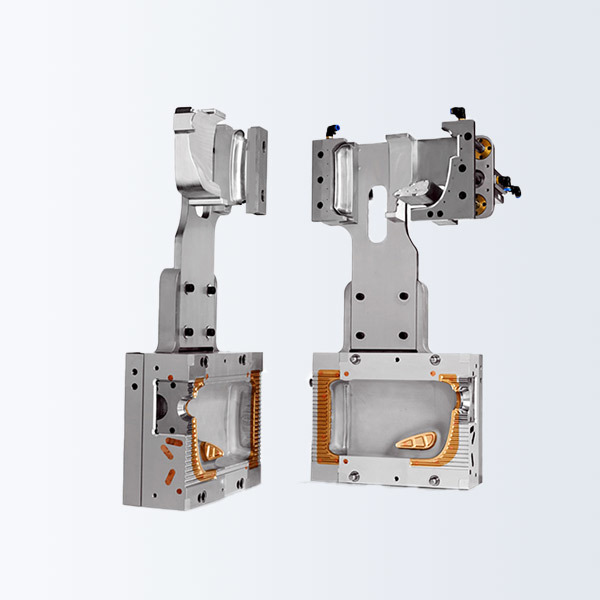Unlocking the Secrets of the Best TPU Mold for Your Production Needs
Time:
2025-06-22
Unlocking the Secrets of the Best TPU Mold for Your Production Needs
Manufacturers across various industries continually seek innovative solutions to enhance their production processes. **Thermoplastic Polyurethane (TPU)** molds have emerged as a favorite for many due to their versatility and durability. Understanding the nuances of selecting and using the best TPU molds can significantly impact your production quality and efficiency.
Table of Contents
- 1. Introduction to TPU Molds
- 2. Advantages of TPU Molds in Manufacturing
- 3. Key Material Properties of TPU
- 4. Essential Design Considerations for TPU Molds
- 5. Effective Production Techniques for TPU Molds
- 6. Common Issues with TPU Molds and Solutions
- 7. Maintenance Tips for Longevity
- 8. Frequently Asked Questions
- 9. Conclusion
1. Introduction to TPU Molds
**Thermoplastic Polyurethane (TPU)** has gained prominence in the field of manufacturing, particularly for creating molds that exhibit excellent mechanical properties. These molds are used in various applications, from automotive components to consumer products. Understanding the fundamentals of TPU molds is essential for any manufacturer aiming to optimize their production processes.
2. Advantages of TPU Molds in Manufacturing
TPU molds offer a range of benefits that make them an attractive choice for manufacturers:
2.1. Versatility in Applications
TPU molds can be utilized in numerous applications owing to their adaptable properties. They can produce intricate designs, making them suitable for both large-scale and specialized production runs.
2.2. Excellent Durability and Flexibility
One of the standout features of TPU is its flexibility. These molds can withstand considerable stress and strain without losing their shape or structural integrity, ensuring they can be used repeatedly without degradation.
2.3. Enhanced Chemical Resistance
TPU molds exhibit remarkable resistance to oils, greases, and various chemicals, making them ideal for manufacturing components that may encounter harsh conditions.
3. Key Material Properties of TPU
To select the best TPU mold for your production needs, understanding its material properties is crucial. Here’s a detailed breakdown:
3.1. Hardness and Shore A Scale
TPU hardness can range from soft to hard, measured on the **Shore A scale**. This range allows for tailored solutions based on specific application requirements.
3.2. Temperature Resistance
TPU materials can withstand a wide temperature range, typically from -40°C to 80°C. This property ensures that the molds maintain performance in varying environmental conditions.
3.3. Tensile Strength
TPU boasts impressive tensile strength, making it suitable for high-stress applications. This feature contributes significantly to the longevity of the molds.
4. Essential Design Considerations for TPU Molds
The design of TPU molds plays a pivotal role in production efficiency and quality. Pay close attention to the following design considerations:
4.1. Design Complexity
While TPU can handle complex designs, it's essential to balance intricacy with manufacturability. Excessively detailed designs may complicate the molding process and increase production time.
4.2. Draft Angles
Incorporating appropriate draft angles facilitates the easy removal of molded components. Typically, a draft angle of 1–2 degrees is recommended to prevent damage to the mold.
4.3. Cooling Channels
Designing effective cooling channels within the mold can significantly reduce cycle times and improve the quality of the finished product. Proper placements ensure uniform cooling throughout the mold.
5. Effective Production Techniques for TPU Molds
Achieving high-quality TPU molds requires a grasp of effective production techniques. Here are some methods employed in the industry:
5.1. Injection Molding
Injection molding is the most common method for producing TPU molds. This technique allows for precise control over the molding process, ensuring consistency and quality in production.
5.2. Compression Molding
Compression molding can be advantageous for less complex shapes. This method is often used for larger parts where precision is less critical.
5.3. 3D Printing for Prototyping
Utilizing **3D printing technology** for prototyping can accelerate the development of TPU molds, allowing for rapid iterations and testing before full-scale production.
6. Common Issues with TPU Molds and Solutions
While TPU molds offer numerous benefits, they can encounter several common issues. Here are solutions to address them:
6.1. Warping
Warpage can occur due to uneven cooling. Employing a well-designed cooling system and ensuring uniform material distribution can mitigate this issue.
6.2. Surface Defects
Surface defects such as blemishes can arise from contamination or improper molding conditions. Regular maintenance and cleanliness during the production process can help avoid these problems.
6.3. Shrinkage
Shrinkage is a common phenomenon in molding processes. To manage shrinkage effectively, manufacturers should account for material properties and adjust mold design accordingly.
7. Maintenance Tips for Longevity
Proper maintenance of TPU molds is essential to prolong their lifespan and maintain production quality. Here are several tips:
7.1. Regular Cleaning
Frequent cleaning of molds prevents buildup from affecting the quality of the finished products. Utilize non-abrasive cleaners to maintain mold integrity.
7.2. Inspection and Repair
Conduct periodic inspections to identify signs of wear and tear. Prompt repairs can prevent minor issues from escalating into major problems.
7.3. Proper Storage
When not in use, store TPU molds in a controlled environment to avoid exposure to extreme temperatures and humidity. This precaution helps maintain their structural integrity.
8. Frequently Asked Questions
8.1. What are the main applications of TPU molds?
TPU molds are widely used in industries such as automotive, electronics, and consumer goods for producing various components including seals, gaskets, and housings.
8.2. How do I select the right hardness level for my TPU mold?
Choosing the right hardness depends on the application requirements. Soft TPU is ideal for flexible applications, while harder variants are suitable for structural components.
8.3. Can TPU molds be reused?
Yes, TPU molds are designed for multiple uses, thanks to their durability. However, proper maintenance is essential to ensure their longevity.
8.4. What is the average lifespan of a TPU mold?
The lifespan of a TPU mold can vary significantly based on usage and maintenance, but they can last for several years with proper care.
8.5. How can I troubleshoot issues with my TPU mold?
Identify the specific problem, such as warping or defects, and refer to the maintenance tips provided in this guide. Regular inspection can also help prevent these issues.
9. Conclusion
Navigating the complexities of selecting the best TPU mold for your production needs is essential for achieving optimal efficiency and quality in manufacturing processes. By understanding the properties, design considerations, and effective production techniques associated with TPU molds, manufacturers can make informed decisions that enhance their production capabilities. With proper maintenance and attention to common issues, you can unlock the full potential of TPU molds, ensuring they serve your production needs effectively for years to come.
RELATED NEWS













